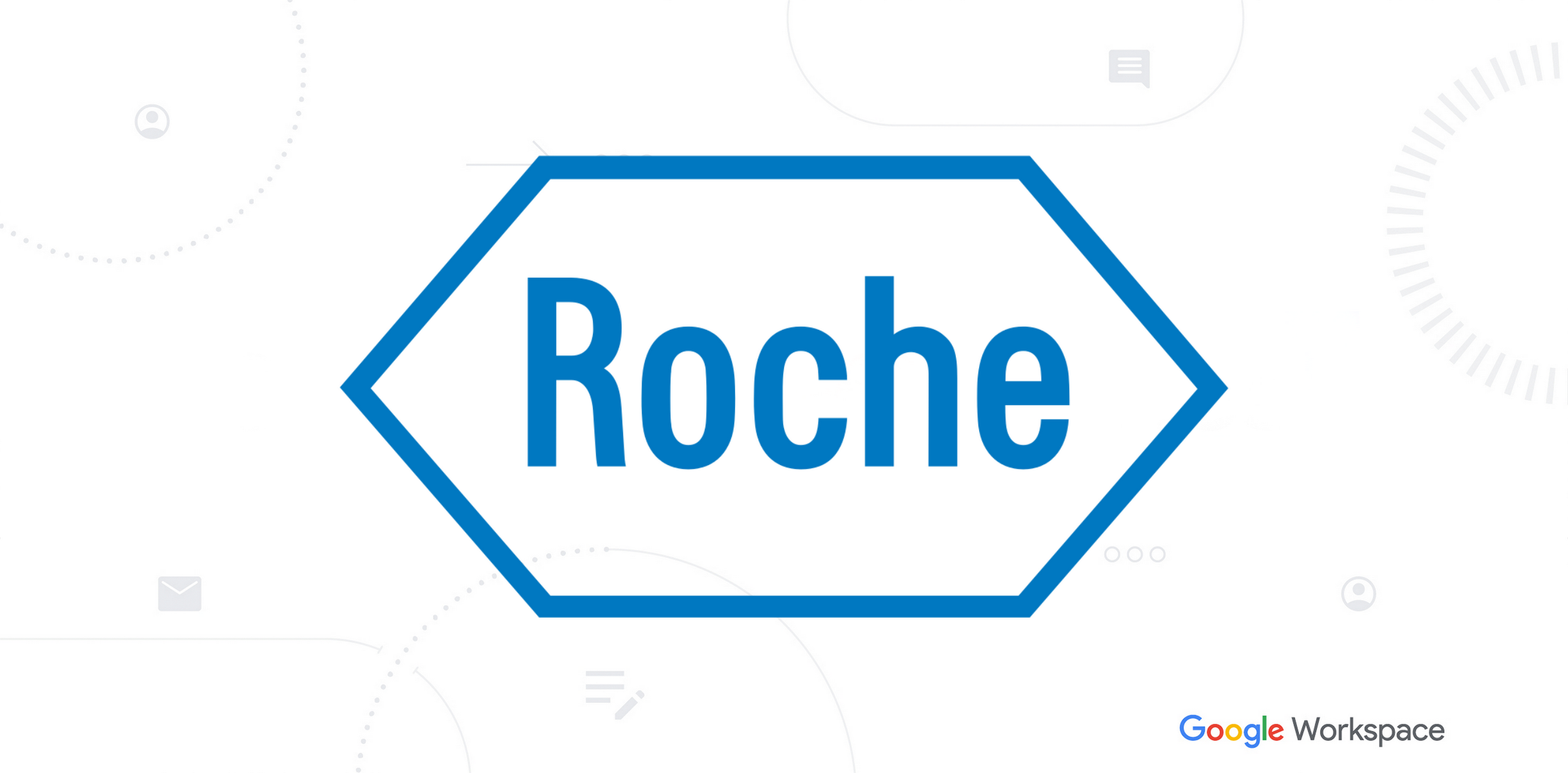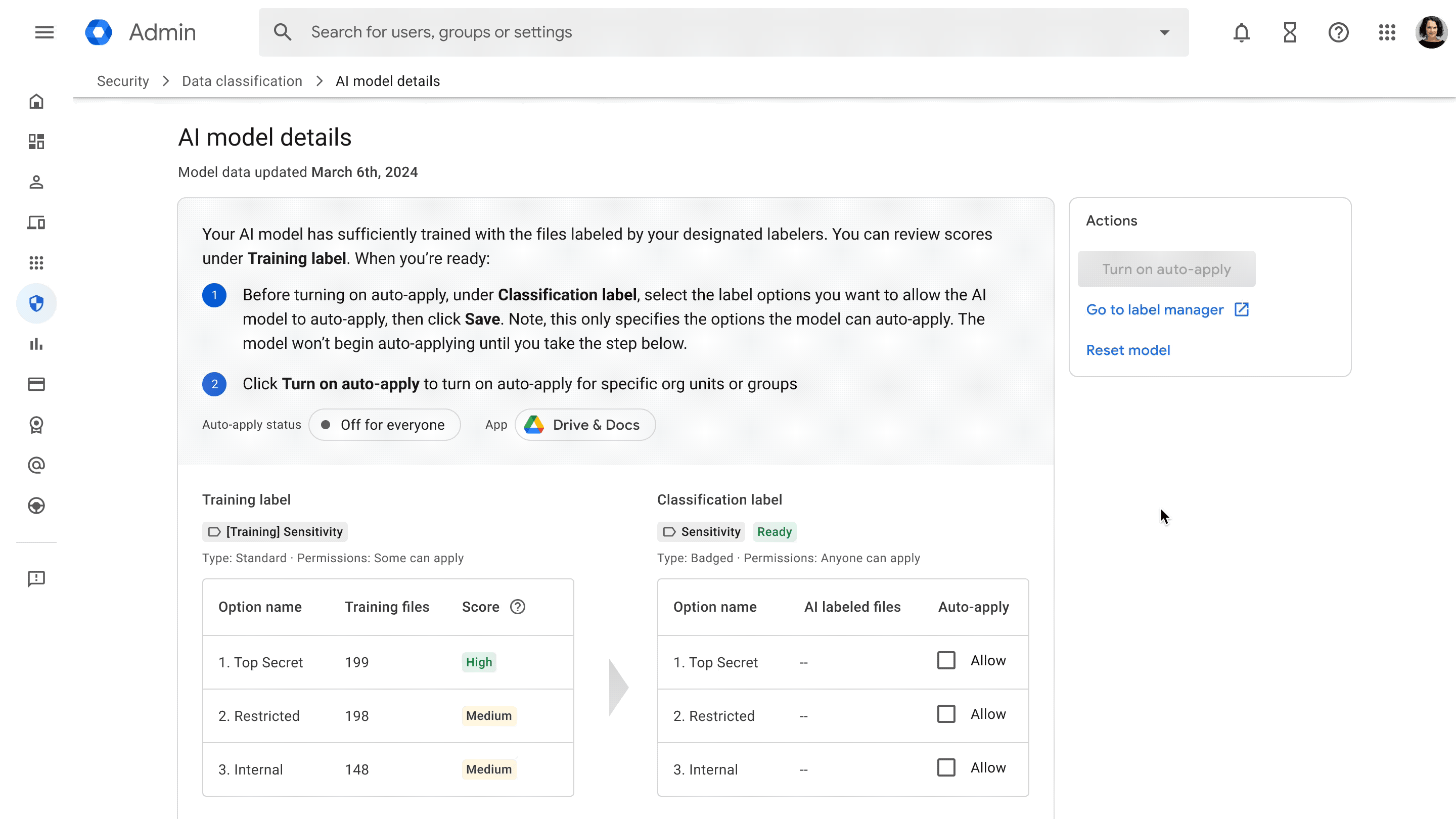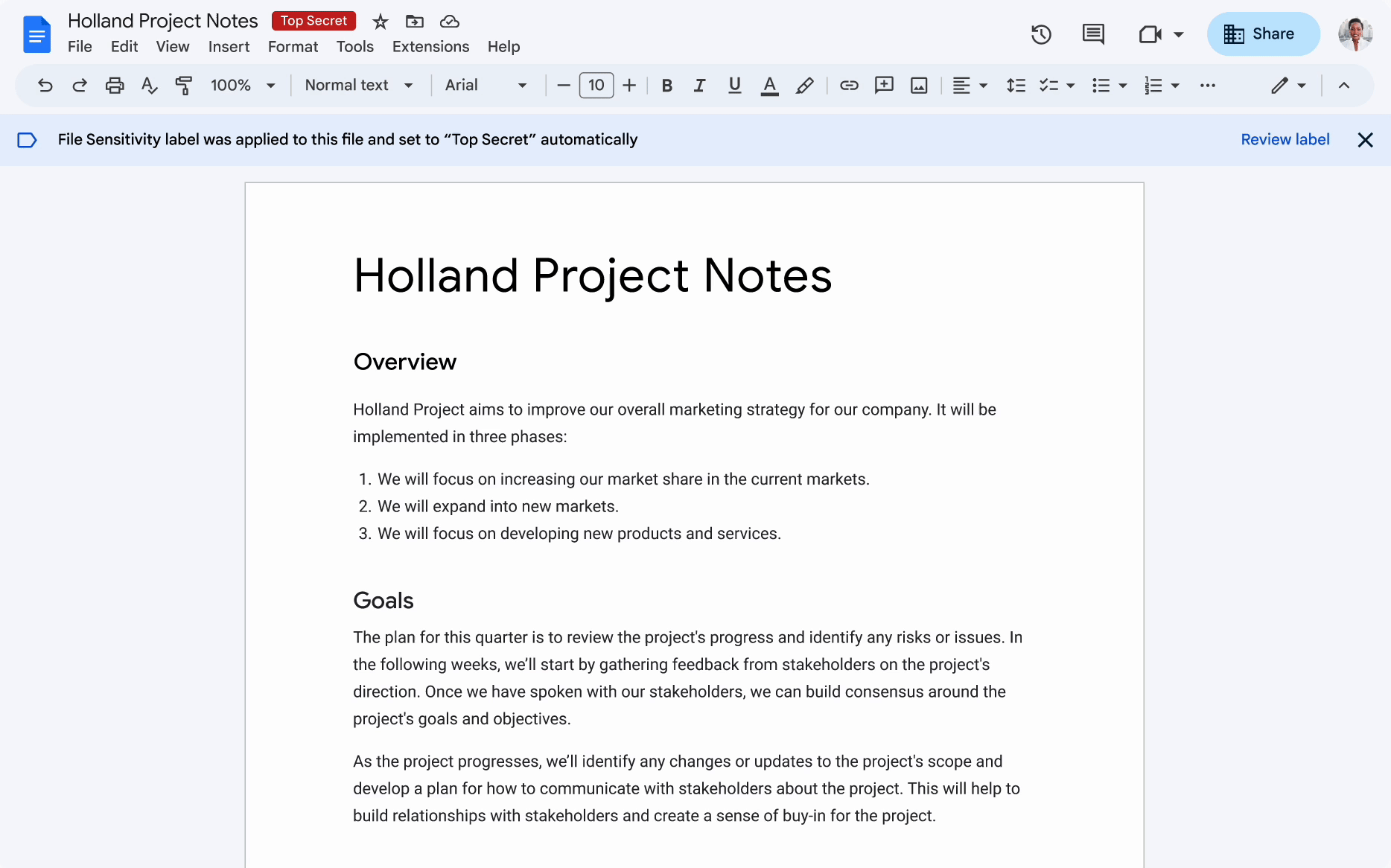Roche protects millions of files with AI Classification in Google Drive

The Google Workspace Team
Google Workspace Newsletter
Keep up with the evolving future of work and collaboration with insights, trends, and product news.
SIGN UP“We have 100,000 users and billions of files in Google Drive. We couldn’t handle the labeling process at scale without AI classification. It provides value immediately, from the moment you turn it on.” — Tim Ehrhart, CISO, Roche
Snapshot: Roche is standardizing security controls and enhancing data protection across its business by automating the document-labeling process. Discover how AI classification for Google Drive within Google Workspace is empowering Roche to:
Develop privacy-preserving, custom AI models to label and classify files
Help evolve its AI model regularly as it learns from newly labeled training files based on Roche’s policies and file-labeling data
Help employees improve their interactions with sensitive information, while saving significant time typically spent on manual labeling activities
What if you could take the burden out of labeling files for better security?
Data classification is one of the foundational steps to achieving granular data management and protection, and it hinges on an organization's ability to label its files at scale. Even though data security is paramount in today’s digital world, labeling remains a tedious task that’s hard to keep up with.
Employees are busy, and they often forget to label or underestimate its importance — rendering powerful classification-based security rules virtually unenforceable. That's why Google Workspace offers robust data classification controls, allowing administrators to define data taxonomies, set label-based data governance policies, and automate the labeling of your documents.
AI classification is taking that approach to a whole new level. Trained on your company’s specific data classification policies and files, this feature uses AI and machine learning to automatically label your organization’s content. AI classification develops a customer-specific model based solely on the data you identify for training, has extensive privacy-preserving protections built in, and is never used for other purposes or public models. After an initial training period when the model learns your specific labeling criteria, AI classification can automatically apply labels, such as “Confidential” or “Internal only,” to both new and existing files in Google Drive. Labels can then be used to trigger rules on files that can and cannot be shared through data loss prevention, helping streamline, automate, and enforce data protection and governance.


AI classification in the real world
Labels aren't busywork — they’re the foundation for strong data security, so you can limit data loss and control access to sensitive information. AI classification helps make this process efficient and scalable.
Roche, one of the world’s largest biotech companies, is already using this tool to overcome the burden of manual labeling. “We want to use AI to get things done more smoothly,” says Tim Ehrhart, CISO at Roche. “With AI classification in Workspace, we can move the labeling process along much faster and keep our documents secure.”
When Roche struggled to achieve its desired security posture and stay on top of labeling documents, AI classification became the answer, helping the company to:
Apply millions of labels: With its previous manual process for labeling, Roche couldn’t consistently label an ever-growing number of files. AI classification enabled Roche to rapidly label millions of documents, establishing a solid foundation for data governance.
Standardize the labeling process: Unreliable labeling practices remained an ongoing challenge at Roche. Now, AI classification helps ensure consistent and standardized labeling.
Empower security teams: Roche’s SecOps team didn’t have clear visibility into the amount of sensitive files in the organization. Systematic labeling provides a full picture of sensitive data, allowing the team to implement more effective controls.
Reduce workloads across teams: Manual labeling used to be extremely cumbersome for Roche. By automating a significant portion of the labeling process, AI classification has freed up valuable time for Roche employees.
Reduce security risks from incorrectly shared files: Data sensitivity at Roche used to mean different things to different employees. Now, with files labeled and classified consistently and properly, employees are more likely to handle sensitive information and files appropriately.


Looking ahead
AI classification in Google Drive helps lay the groundwork for a more robust data security posture at Roche. Streamlined labeling practices help simplify compliance with data security regulations and empower employees to make informed decisions about data handling. And with a clearer understanding of data sensitivity, Roche can implement even more effective data security controls in the future.
“Labeling documents isn’t earth-shattering,” Ehrhart says. “But having a standardized data classification policy and automating the process with AI to do it at scale paves the way for bigger wins in data security and compliance going forward.”
AI Classification is available on our Gemini Enterprise, Gemini Education Premium and AI Security add-ons. Learn more about Gemini for Google Workspace and how you can get started today with a no-cost trial.



